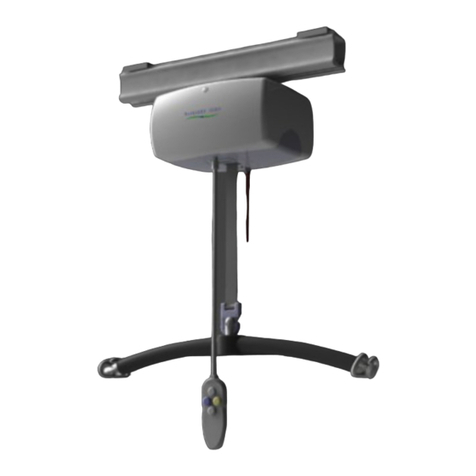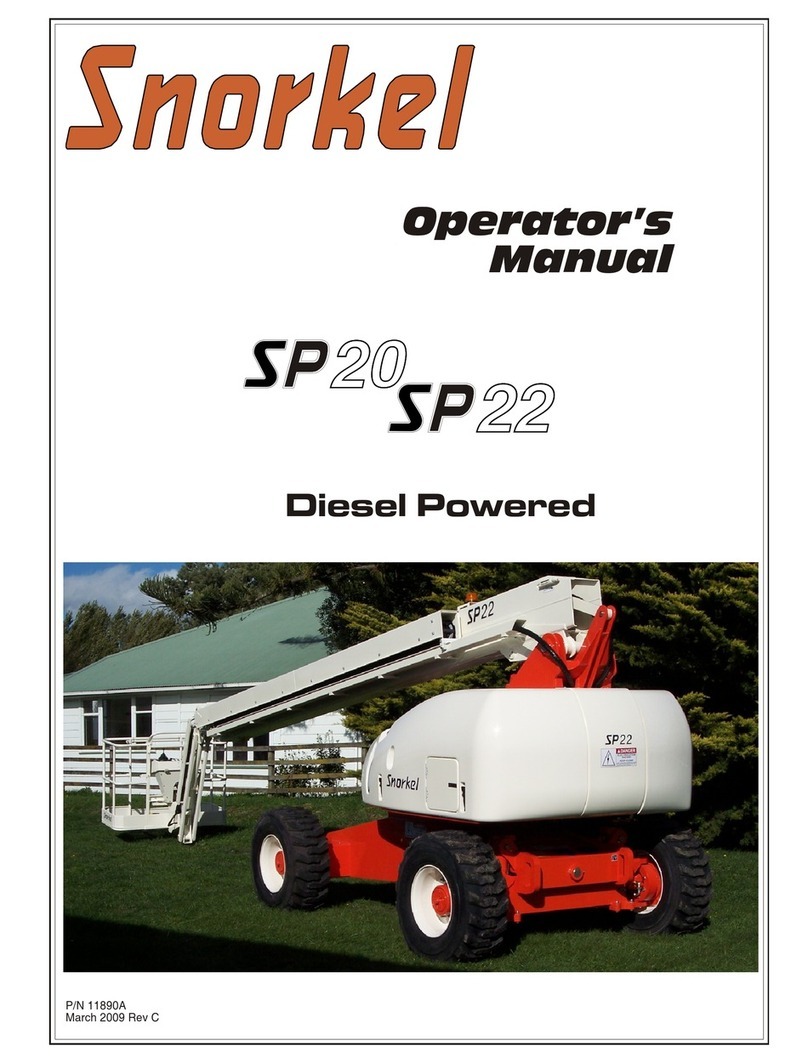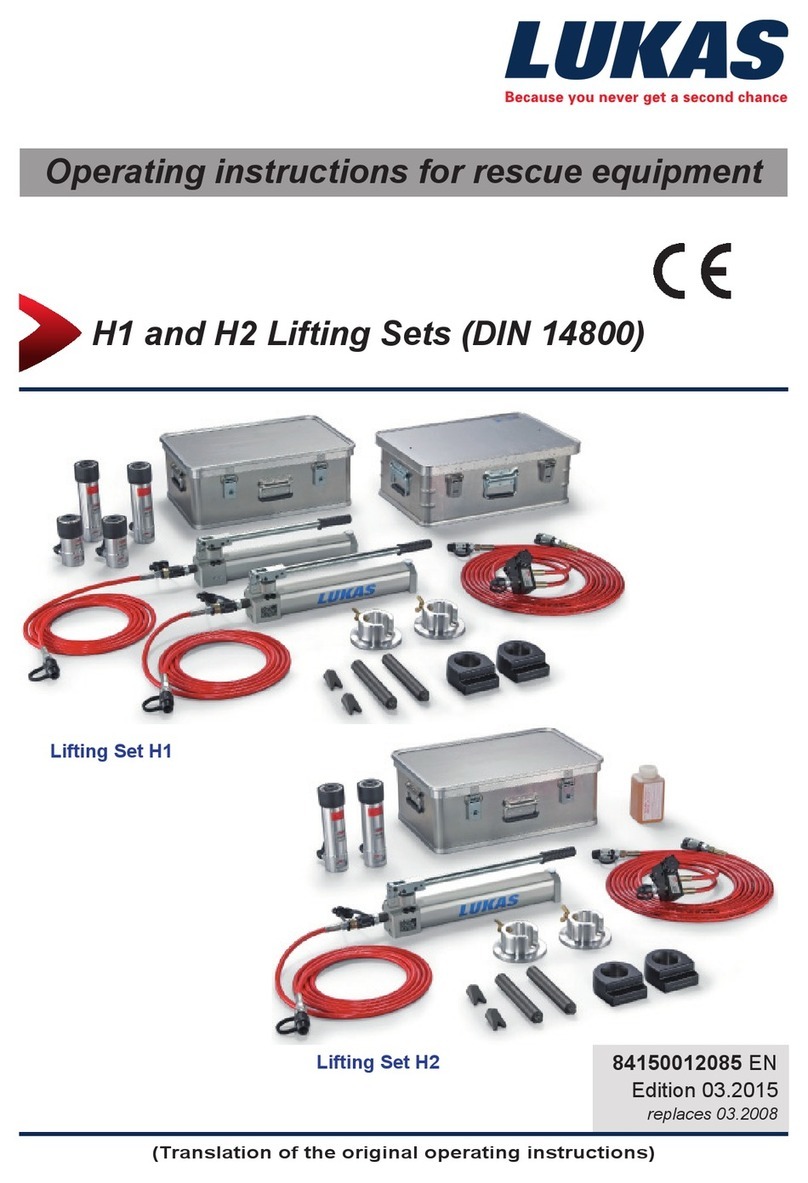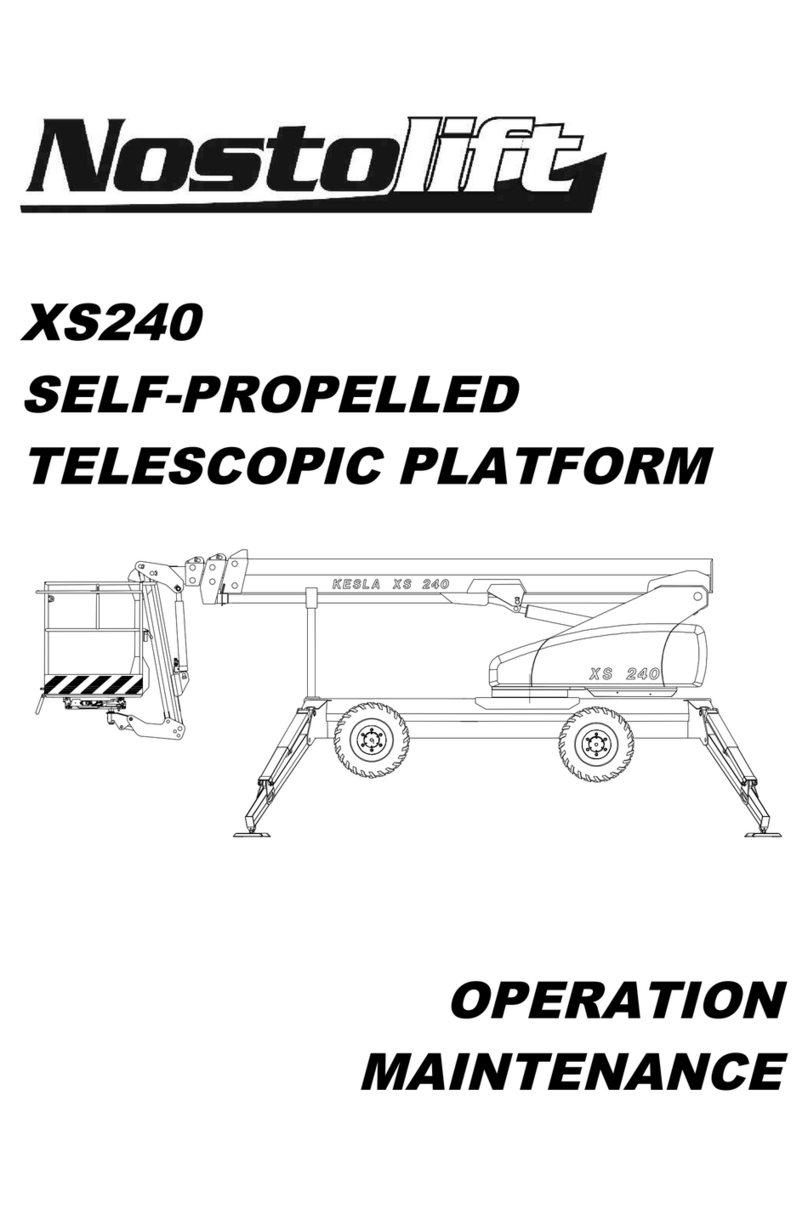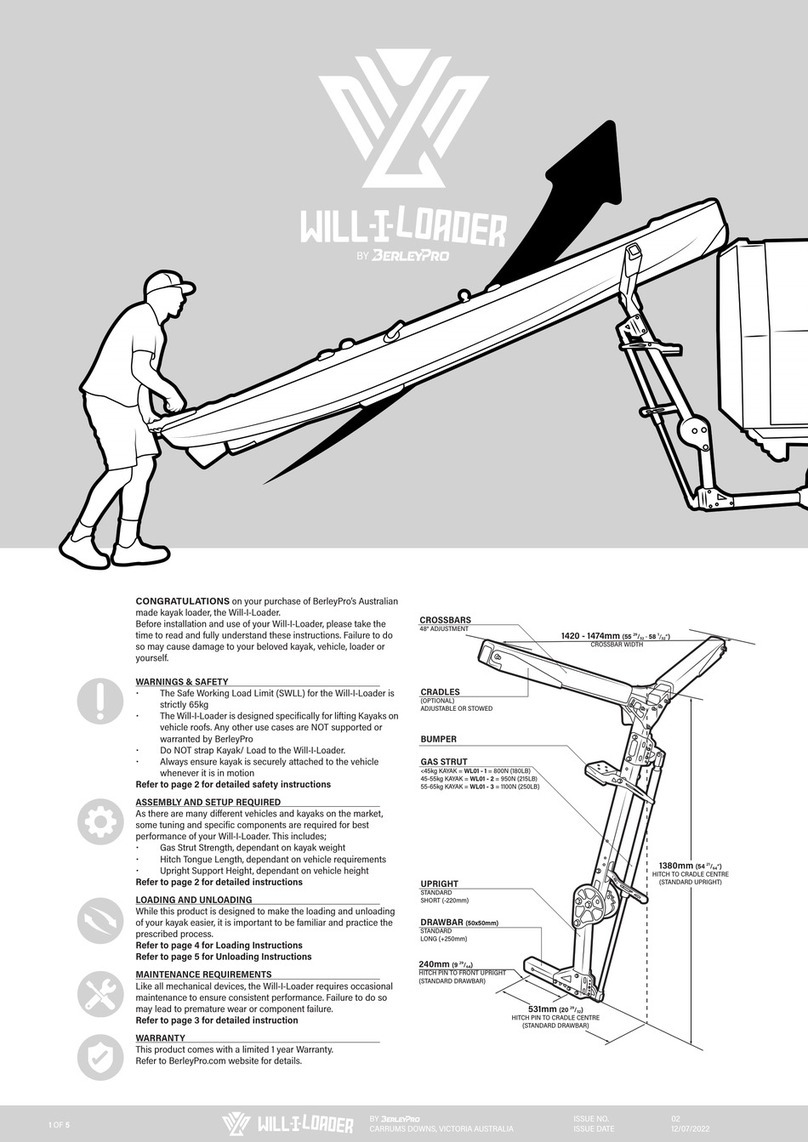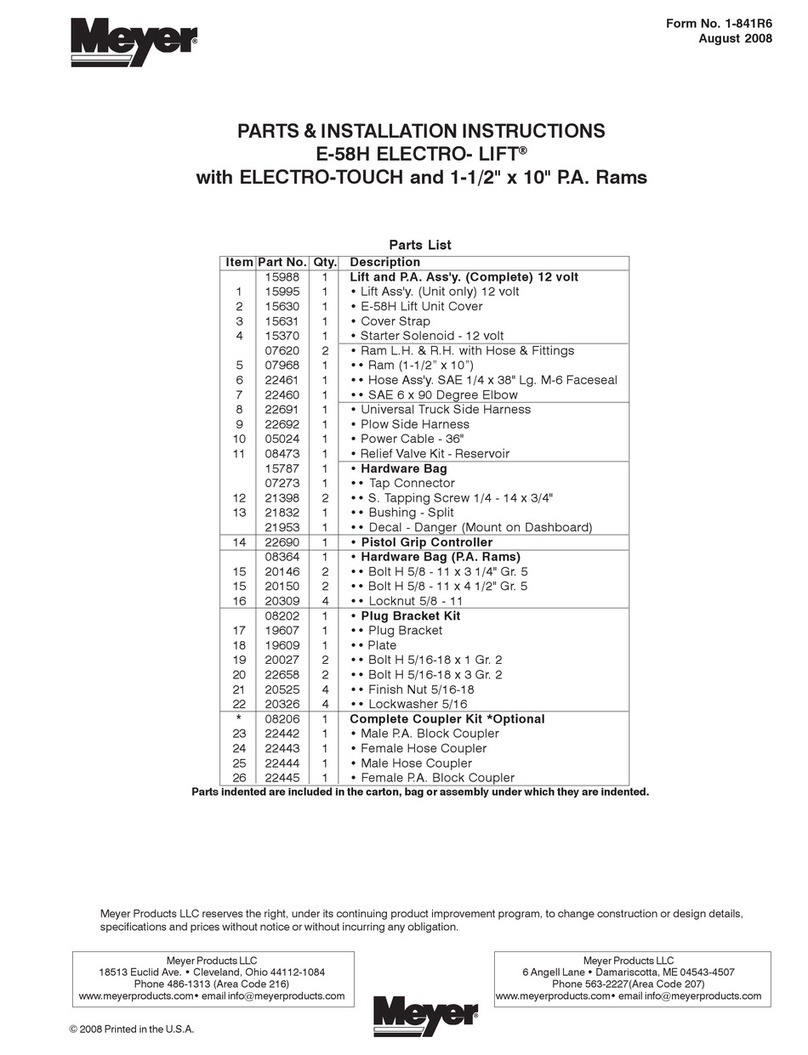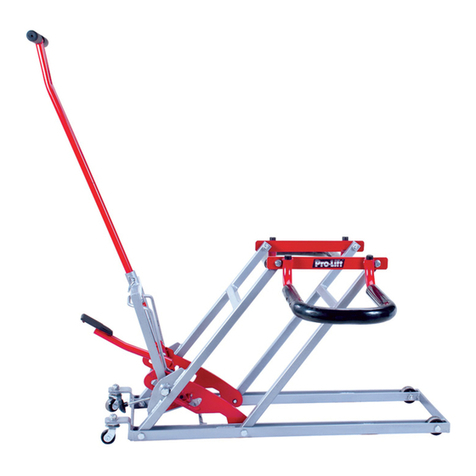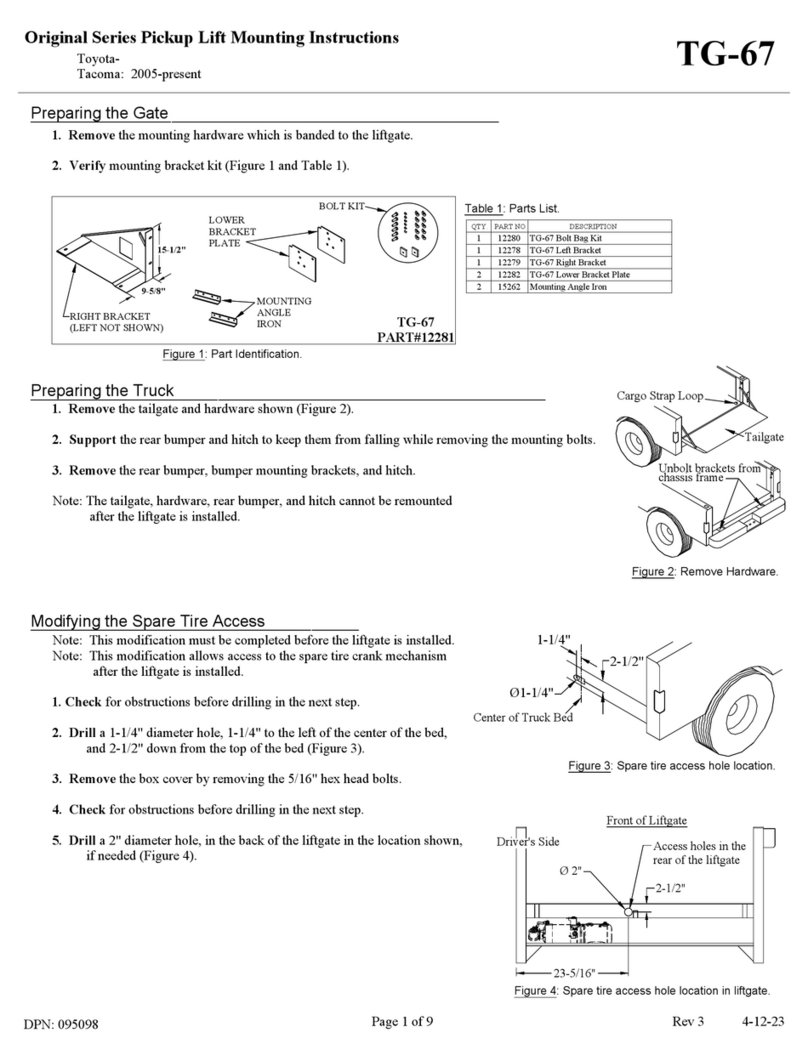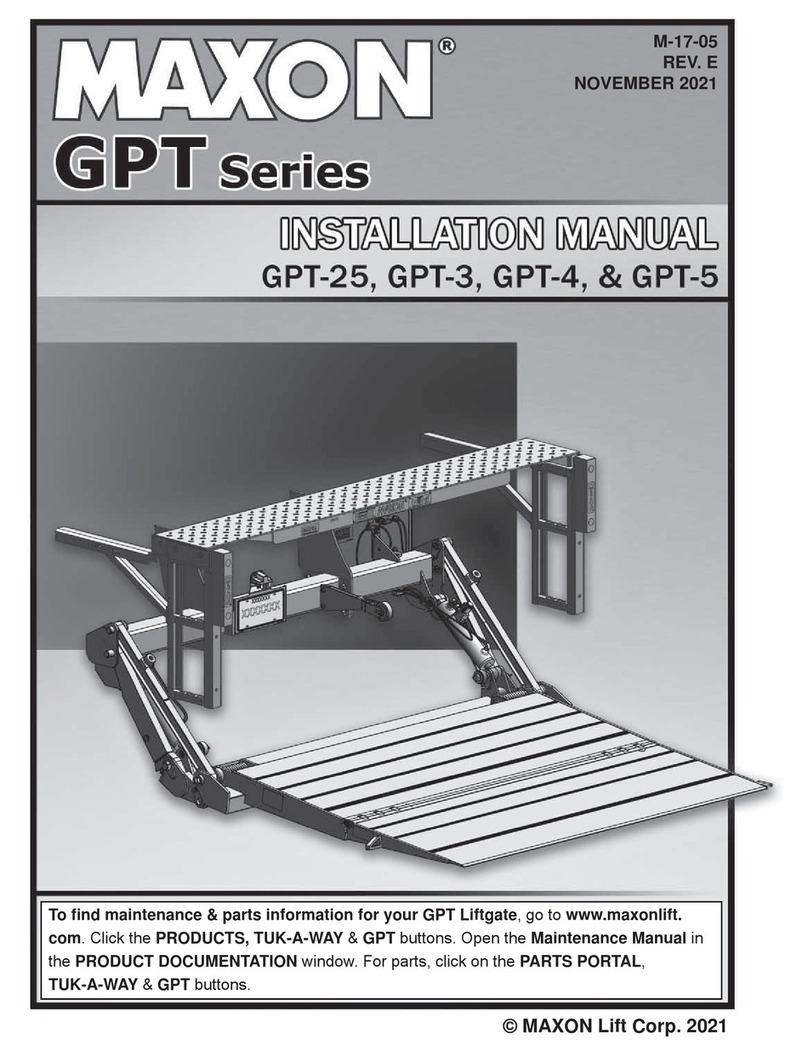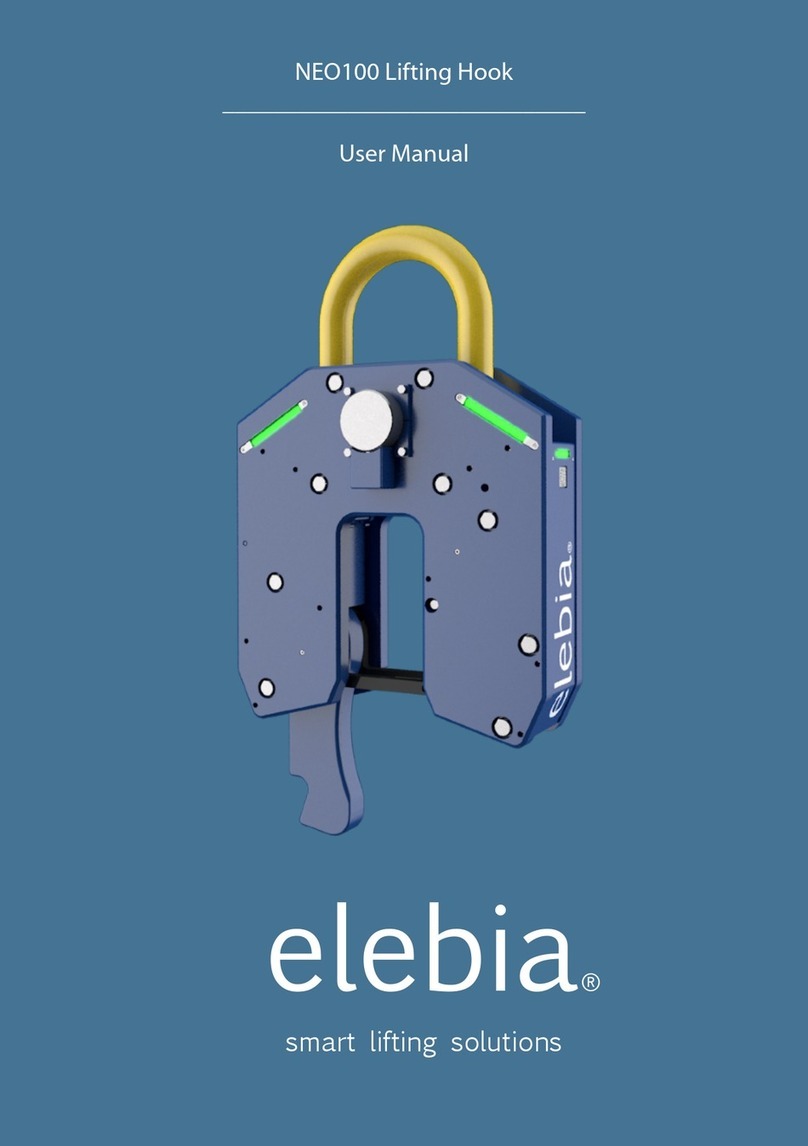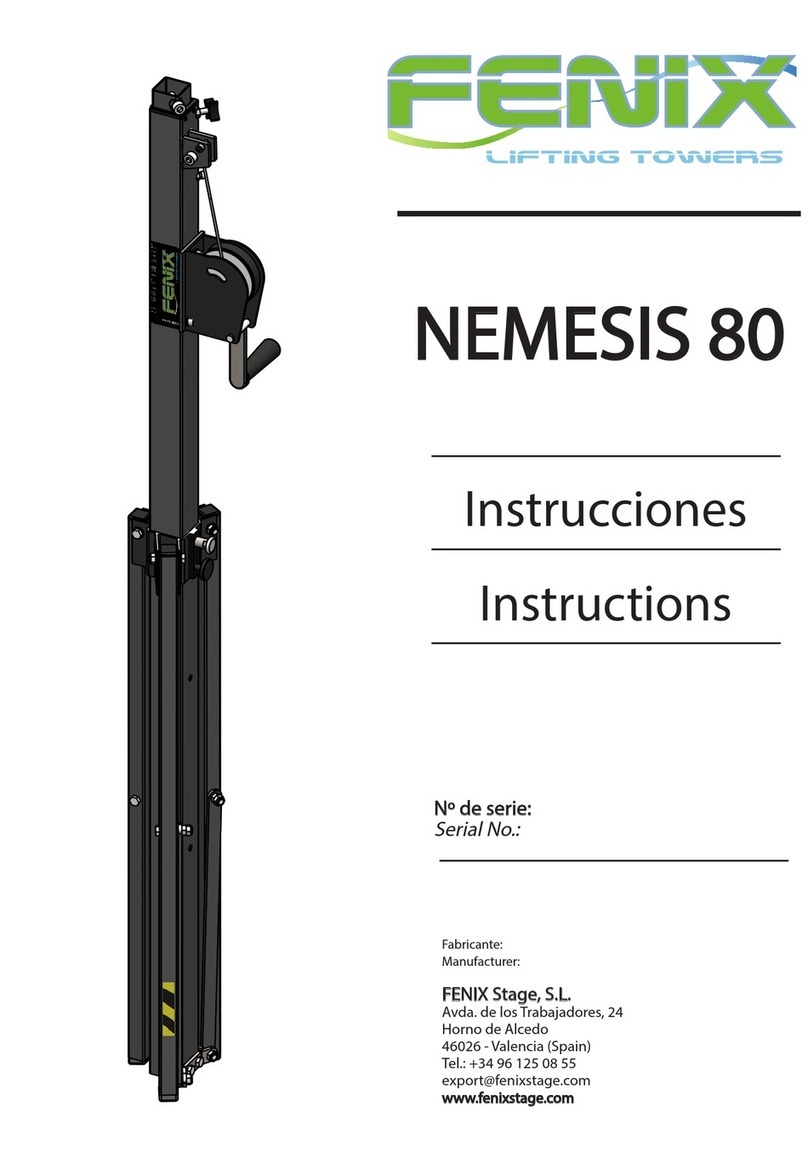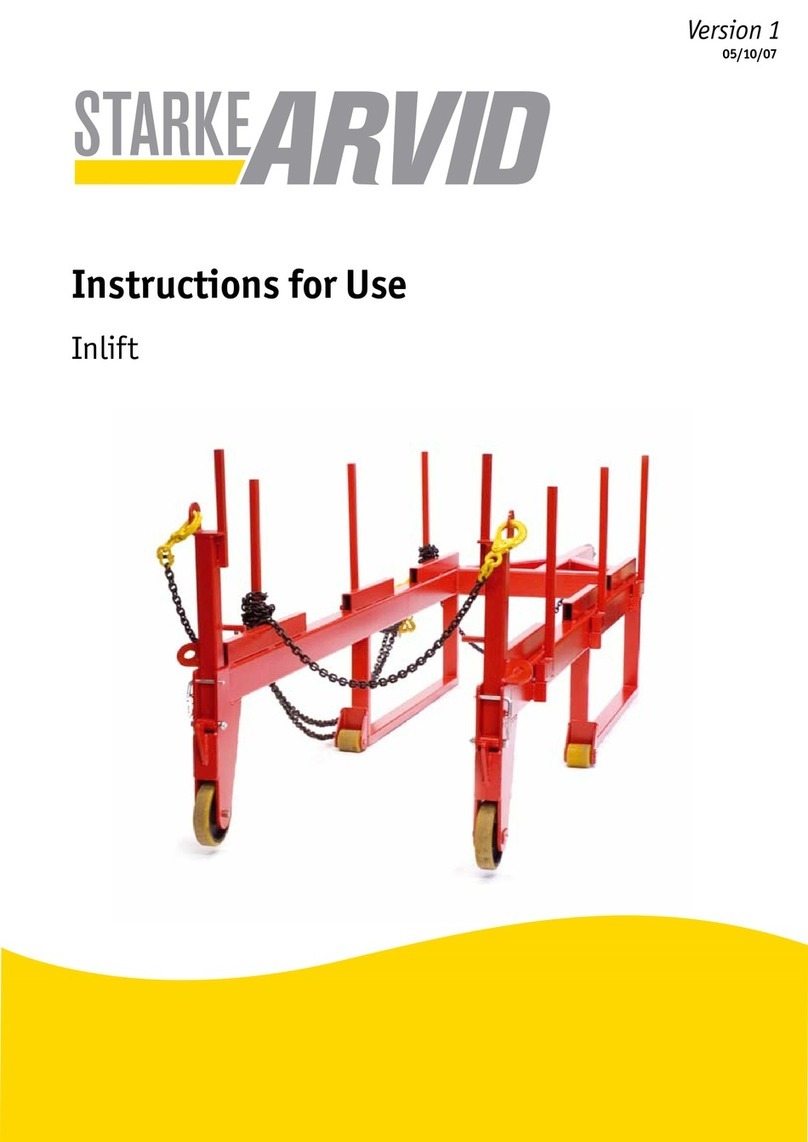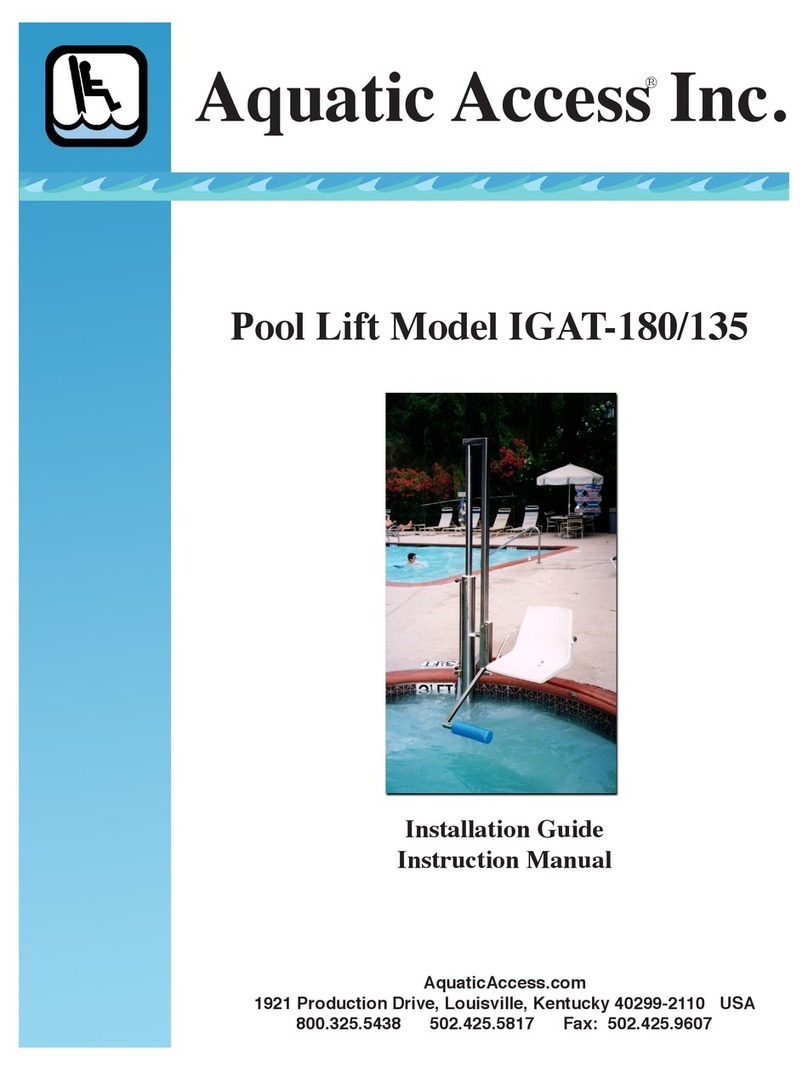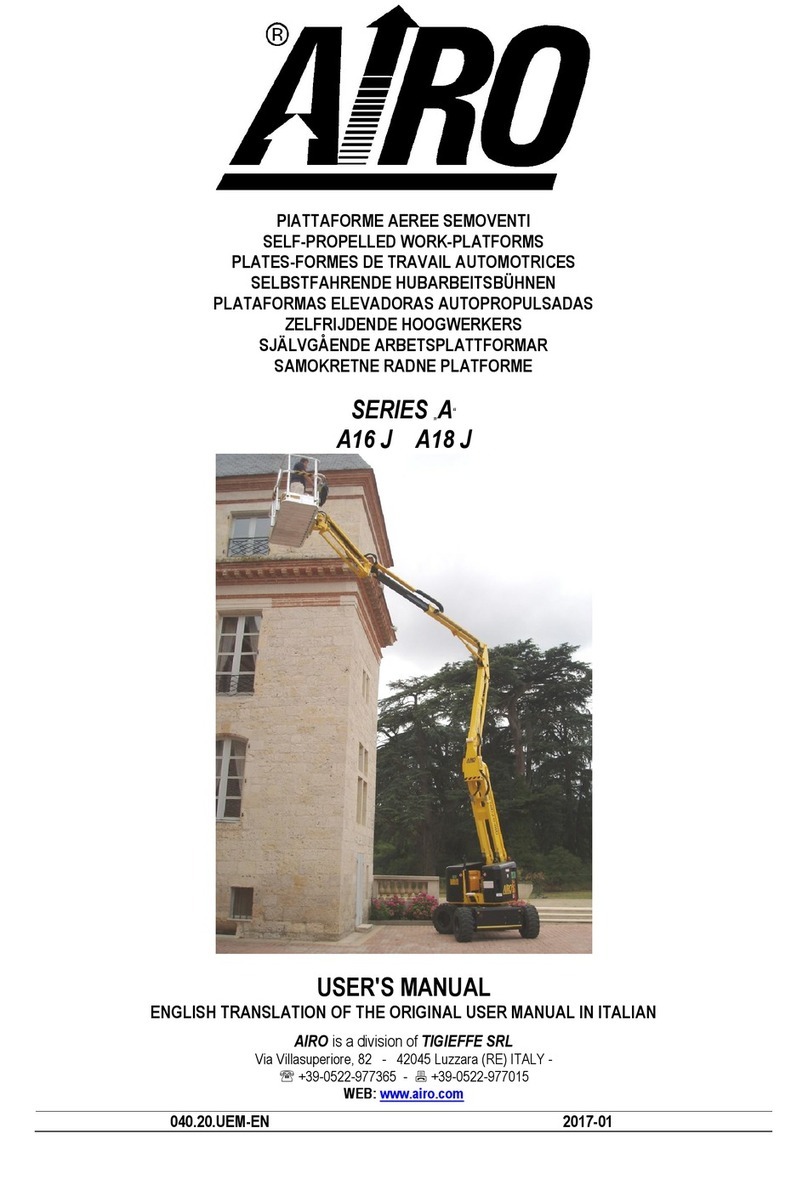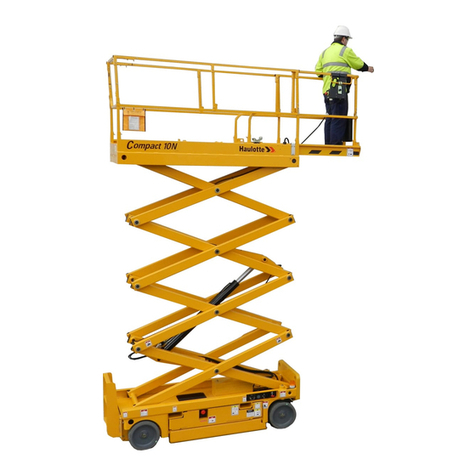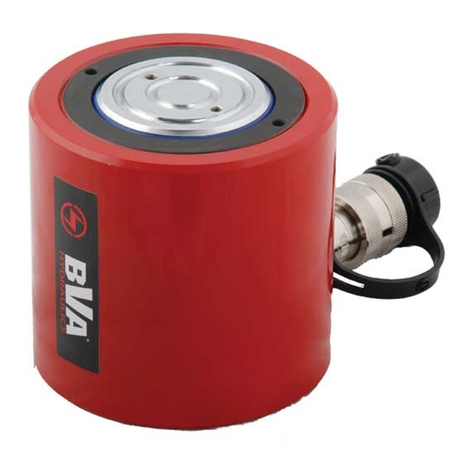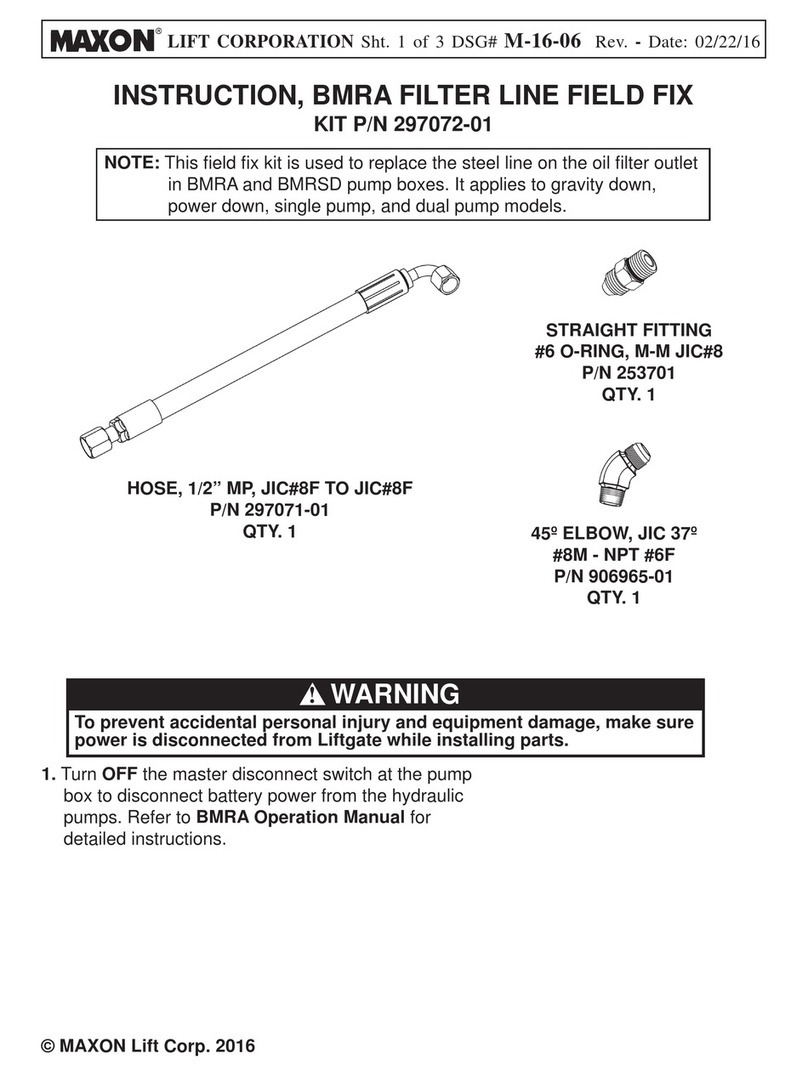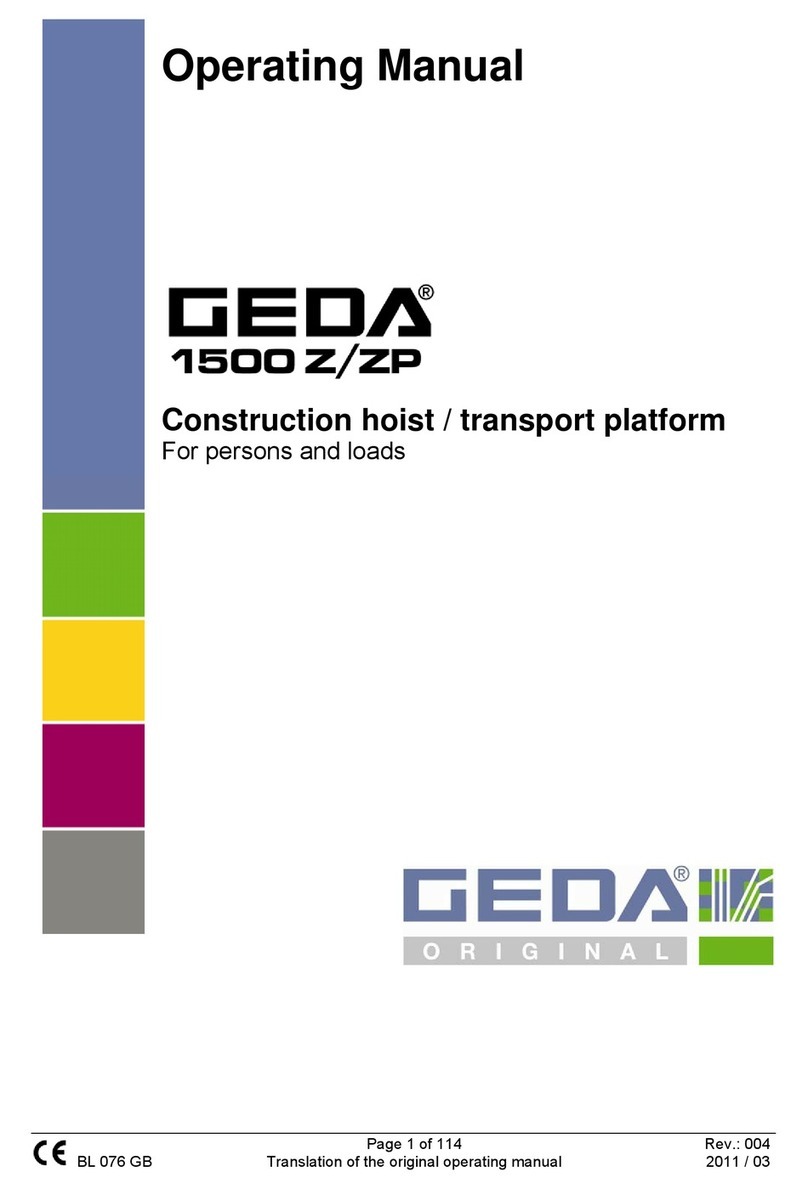Prism Medical UK C450 User manual

Owner’s Manual
Use and Care
Trouble Shooting
Warranty Information
C450/ C625
Introduction......................................................................2
Overview..........................................................................2
Components of lift system...............................................3
Component List ...............................................................4
Specifications ..................................................................4
List of Symbols and Contraindications…………………...6
Cautions ..........................................................................7
Attaching the airline to the lift ..........................................8
Operation
Turning the lift ON/OFF.............................................9
Raising/Lowering the carry bar..................................10
Moving the lift along the track....................................10
Moving the “H” system traversing beam....................11
Return to Charge ............................................................12
Basics in transferring an individual..................................13
Charging the lift ...............................................................16
Constant Charger ............................................................17
Attaching/Detaching QRS Carry Bar from QRS Hook ....18
LCD Display Functionality ..............................................20
Emergency Stopping .......................................................22
Emergency Lowering.......................................................22
Emergency Manual Raising or Lowering.........................23
Cleaning and Disinfection………………………………….24
List of applied Parts…………………………………………24
Trouble Shooting .............................................................25
General inspection and maintenance..............................26
Lift Accessories ...............................................................28
IEC-60601-1-2:2007 EMC/EMI Compliance Guidelines..29
Service record history......................................................33
Warranty..........................................................................37

C450/ C625 - User Guide (753101) Rev: 14 MAR 2017 Page: 2
CAUTION: DO NOT ATTEMPT TO USE THIS EQUIPMENT
WITHOUT FIRST UNDERSTANDING THE CONTENTS OF
THIS MANUAL.
Introduction
Overview of C450/ C625 lift system
Before using this equipment, and to ensure the safe operation of your C450/ C625 lift, carefully read this en-
tire manual, especially the section on “Cautions”. The C450/ C625 is designed to be used in conjunction
with Prism Medical lift track, accessories and slings. Please refer to any user guides supplied with these com-
ponents and refer to them while reviewing this manual.
Should any questions arise from reviewing this manual contact your local authorized Prism Medical dealer.
Failure to comply with warnings in this manual may result in injury to either the operator, or the individual
being lifted/transferred. Damage to the lift and/or related components may also occur. Be sure that the contents
of this manual are completely understood prior to using this piece of equipment.
Store this manual with the documents included with the lift system and sling (s). Contents of this manual are
subject to change without prior written notice.
The C450/ C625 is a lifting aid used by health care professionals and those providing care in the home to lift,
position and transfer clients or a disabled family member. The C450/ C625 lift is part of what is termed ceil-
ing lift technology which takes advantage of lifting from above and not from below or the side. Additionally
the ceiling lift does not take up valuable floor space as most traditional methods do. Finally, the ceiling lift
makes it possible to move mobility impaired individuals with minimal strain or risk to the caregiver, while
providing complete safety, dignity and comfort for the client or family member.
The C450/ C625 lift is one of three major components that make up this technology. The other two compo-
nents are the track and sling. The C450/ C625 lift runs on the lift track which is securely mounted to the ceil-
ing structure of the institution, or home with the use of ceiling brackets. The track itself is made of specially
designed aluminum and comes in many different shapes, lengths and configurations, and is custom tailored and
installed to meet your specific requirements. The third component, the sling, is a specially designed fabric ac-
cessory that attaches to the lift by means of a carry bar and straps, and holds an individual while the lift, posi-
tioning or transfer takes place. Both the track and sling are generally supplied with the lift at the initial time of
purchase. Please refer to any user guides supplied with the C450/ C625 lift and reference them while review-
ing this manual.
The C450/ C625 is a fixed ceiling lift, that is, it always remains on the lift track. It has the ability to lift an in-
dividual up from one location such as bed, move the individual along the track to another location and
finally lower the individual into a chair or bath. It is moved along the track in one of two ways. The first is by
manually moving the lift along the track with the aid of a caregiver. The second is by having the lift power it-
self along the track. The functions of lifting up or down, or moving to the left or right, are accomplished by
pressing buttons of a pneumatically (air) operated hand control. The hand control is attached to the lift by way
of a rubber airline tubing. Due to the design of the lift system, it takes very little effort to press a button to per-
form the desired motion.
Please refer to figures 1A and 1B to see sample floor plans of an installed lift system. Refer to figures 2A and
2B to familiarize yourself with the components of the C450/ C625 lift. Figures 3A and 3B show the underside
view of the lift as it would be seen by an operator.

C450/ C625 - User Guide (753101) Rev: 14 MAR 2017 Page: 3
Components of lift system
Figure 1A - Sample floor plan showing basic components of
a ceiling lift system.
BATHROOM
BEDROOM
TRACK
BED
BATH
CHARGER
LIFT
BEDROOM
BED
BATHROOM
BATH
CHARGER
TRACK
LIFT
Figure 1B - Alternate sample floor plan showing basic
components of a ceiling lift system.
Figure 2A - Basic components of the ceiling lift
Figure 3A—Underside view of the lift
Figure 2B - The C450/ C625 ceiling lift with
standard Emergency Stop/ Lowering.
Figure 3B - Photo of underside
Emergency Stop/
Lowering
Carry bar
Lifting tape (strap)
Track

C450/ C625 - User Guide (753101) Rev: 14 MAR 2017 Page: 4
Specifications of C450/ C625 lift
Lift Motor: 24 VDC
Traverse Motor: 24 VDC (Optional at time of Purchase)
“H” Frame Traverse Motor: 24 VDC (Optional at time of Purchase)
Charger Alternate 1 Model: Soneil, 2403SRM30
Charger Alternate 1 Input: 100-240 VAC, 1.5 Amps, 50-60 Hz
Charger Alternate 1 Output: 24 VDC, 1.5 Amps
Charger Alternate 2 Model: Soneil, 2403SRM20
Charger Alternate 2 Input: 100 VAC 0.45 Amps, 240 VAC 0.22 Amps, 50-60 Hz
Charger Alternate 2 Output: 28.8 VDC, 1 Amp
Charger Alternate 3 Model: Mascot, 9940
Charger Alternate 3 Input: 100-240 VAC, 0.9 Amps, 50-60 Hz
Charger Alternate 3 Output: 29.5 VDC, 1.3 Amps
Batteries: 24 VDC (2 x 12 VDC) 5.0 AH, Sealed Lead Acid
Lift Case: Flame Retardant ABS
Hand Control: Pneumatic
Lifting Range: Up to 96” (2438mm)
Lift Weight: 21—23.5 lbs.(9.5-10.65Kg)
Maximum Load: Standard maximum load 450lbs (204 Kgs). Also available in 625 lbs(283 Kgs).
Duty Cycle: 1 Min “ON”-9 Mins “OFF”
Rated Performance: 30-40 lifts at 625 lbs.(283 Kgs) , 50-60 lifts at 450 lbs.(204 Kgs) , 1 Min “ON”-9 Mins
“OFF” duty cycle, each lift being 24 inches/610mm at the middle of the lifting range
(from 54”/1370mm strap out to 30”/762mm strap out) per full battery. Please note: the
lift has a break in period; breaking in of the lift will need to be done before these
numbers will be achieved. The breaking in period will vary from lift to lift and is
dependent on the frequency of use and the types of load being applied, the higher the
load and a greater frequency of use will break in the lift faster.
Max Sound Level: Raising Max load 56.1 dB , Lowering Max load 60.3 dB .
Service Life: 22500 Cycles or 10 years , whichever comes earlier.
As a precautionary measure, the lifting strap should be replaced every 5000 cycles or 3
years, whichever comes earlier. Higher usage lifts may necessitate more frequent
replacement of the lifting strap; please refer to pages 26-27 for General Inspection and
Maintenance information.
The following components are included with your new C450/ C625 lift system:
• C450/ C625 lift (Manual or Motorized traverse)
• Pneumatic Hand Control
• Lift Charger (mounted on the wall or ceiling at the end of the track)
• Owner’s Manual
• Warranty Card
SLINGS: If a sling has been supplied with the lift refer to the instructions included with the sling.
ACCESSORIES: If additional accessories such as a turntable, or gate system have been supplied with the lift
refer to the instructions included with those items.
IMPORTANT: Before initial use, the lift unit must be charged for 4 hours. Refer to section titled
"Charging Instructions". The hand control airline tube must also be connected to the lift. If it is not
connected refer to the section titled “Connecting airline to the lift”.
Component List
Maximum load of the installed lift is
determined by referring to the product
label located on side of lift.
Shipping/Storage Conditions:
Temperature: -40 to +70 ºC
Relative Humidity: 10 to 100% RH
Atmospheric Pressure: 500 to 1060 hPa

C450/ C625 - User Guide (753101) Rev: 14 MAR 2017 Page: 5
Models Table for C450/ C625 Lift
Code Description
323100 C450 Manual Traverse
323117 C625 Manual Traverse
323150 C450 Power Traverse
323127 C625 Power Traverse
323177 C450 Power X-Y
323137 C625 Power X-Y
323149 C450 Power Traverse c/w Return to Charge
323126 C625 Power Traverse c/w Return to Charge
NOTE: For C Series w/QRS Hook Part nos., See page no. 18
Lifting Range
NOTES:
Please use the following type of plug for C-450 or C-625 lifts installed in the
UK:
Please use the following type of plug for C-450 or C-625 lifts installed in Australia.
The C-450 or c-625 lift shall be connected to a center-tapped single phase supply cir-
cuit when users in the United States connect the equipment to a 240 V supply system.
IMPORTANT: Refer to section “IEC-60601-2-7:2007 EMC/EMI compliance Guidelines” for details
regarding electromagnetic compatibility information .

C450/ C625 - User Guide (753101) Rev: 14 MAR 2017 Page: 6
Glossary of Symbols used in the C Series
Contraindications
There are no known “contraindications” associated with the usage of C450/C625 and its accessories,
provided they are used a per manufacturer’s recommendations and guidelines.
However ,it is recommended that a client specific assessment is completed by a trained and knowledgeable
health care professional to determine the method of transfer. Prism Medical does not recommend a required
number of caregivers for the use of our products. This information and recommendation can only be provided
after a thorough personalized, case specific assessment, as there are many factors that can influence these de-
cisions. It is however, “obligatory” that a client that is assessed as being an independent user of our ceiling
lift technology have the ability to receive assistance, during the transfer, in the event of a lift malfunction or
personal concern. This assistance can be provided in the form of; a nearby qualified caregiver, a phone, a
communication device etc.
Mark Symbol Reference Title Mark Symbol Reference Title
X
IEC 60417-
5172
CLASS II equipment X
IEC 60417-
5840
TYPE BAPPLIED
PART
X
ISO 7000-
0434
Caution risk of dan-
ger or Attention, con-
sult ACCOMPANYING
DOCUMENTS
X ISO 7010-
M002
REFER TO INSTRUC-
TIONS MANUAL/
BOOKLET
X TUV Certified by TUV
X
IEC 60417-
5008 “OFF” POWER
X
IEC 60417-
5007
“ON” POWER X
IEC 60417-
5011 “ON”/”OFF”
X
NA
STATUS LED’s FOR
BATTERY LEVEL
AND SYSTEM ERROR
INDICATION
X
NA EMERGENCY
DOWN
PICTORIAL REPRESENTATION OF SYMBOLS

C450/ C625 - User Guide (753101) Rev: 14 MAR 2017 Page: 7
●The C450/ C625 must be installed prior to use. Contact your local authorized dealer to ensure that it
is properly installed. The C450/ C625 must be installed only by persons authorized by Prism
Medical. The installation guide is available with authorized dealers.
●Under no circumstance should the C450/ C625 track, lift and sling (s) or entire system be put in con-
trol of a person who has not been properly trained in the use and care of this equipment. Failure to ad
here to this warning may result in serious injury to the operator, and/or the individual being lifted/
transferred.
●The C450/ C625 lift, and associated track and sling (s) are not toys. Do not use it for unsafe prac-
tices. Do not allow children to play with the lift or any of its’ components.
●The manufacturer's warranty is void if persons unauthorized by Prism Medical perform work on the
C450/C625 lift system.
●There are no user serviceable parts inside the cover. Do not remove cover screws, or open the lift
unit, as this may result in serious injury and will VOID THE WARRANTY.
●In facilities where more than one operator will be responsible for using the C450/ C625 lift and as-
sociated track and sling (s) it is imperative that all such members be trained in its’ proper use. A train-
ing program should be established by the facility to acquaint new operators with this equipment.
●Never expose the C450/ C625 lift directly to water. Warranty does not cover any misuse or abuse of
the lift system.
●To maintain optimum function, the C450/ C625 should be inspected and maintained on a regular
basis. See the section titled “General Inspection and Maintenance”.
●Any accessories used with the C450/ C625 including track and sling (s), should be checked to
ensure that they are in good working order. Check for signs of wear or fraying prior to use. Report any
unusual wear, or damage immediately to your local authorized Prism Medical dealer.
●The C450/ C625 lift and associated lift, track and sling (s) are intended only for lifting and
transferring of a person. Prism Medical will not be responsible for any damage caused by the misuse,
neglect or purposeful destruction of the lift, and/or its’ associated components. Do not attempt to
modify/alter the C-625/C-450 lifts.
●Do not in any circumstance exceed the maximum allowable load of this lift. Refer to the
“
Specifications” section of this manual, and/or the labels on the side of the lift.
●The installation of the lift, track, accessories, and sling are certified to a maximum load. Do not
exceed the maximum rated load of any of the components,
●There is a risk of explosion if the lift is used in the presense of flammable anaesthetics.
●Ensure that a clear space is maintained around the lift and track. Move all curtain material and other
obstacles out of the way before performing a transfer.
The charger must be located outside the patient vicinity at all times. The patient vicinity is the space
with surfaces likely contacted by the patient or an attendant who can touch the patient. This
space is 6 feet (1.83m) beyond the perimeter of the bed, examination table, etc., extending vertically
7-1/2 feet (2.29m) above the floor.
C-625/C-450 lifts can be decommissioned/Disposed off after recommended service life in accordance
with regional component specific disposal recommendations.
Cautions

C450/ C625 - User Guide (753101) Rev: 14 MAR 2017 Page: 8
Attaching the airline tube to the lift
Should the gray rubber airline that connects the lift to the hand
control become disengaged from the underside of the lift it must
be re-connected in order for the lift to work properly.
The rubber airline may become disconnected for the following
reasons:
1) The lift is pulled along the track by the airline.
2) The tubing accidentally gets wrapped around an object while
a lift or transfer is being performed.
3) It is accidentally pulled out by the caregiver or the individual
being lifted.
The airline is connected to a grey rubber grommet located on the
underside of the lift. Refer to figure 13A.
Small metal ribbed pins located at the end of the airline hold the
airline to this rubber grommet in a specific manner. Therefore it is
important to make sure that the airline is connected properly.
Both the grey airline and the rubber grommet have a grey rib on
one of their sides. Line up the grey ribs together. Refer to figure
13B. When this is done then the metal ribbed pins attached to the
end of the airline can be re-inserted into the corresponding holes
in the rubber grommet on the underside of the lift. Be sure to in-
sert the pins into the grey rubber grommet sufficiently so that it is
secure. Refer to figure 13C.
Perform a brief test to ensure proper connectivity. Turn the lift
ON and OFF. Raise and lower the carry bar. For motorized trav-
erse lifts move the lift left and then right. If these functions work
correctly then the airline is properly connected.
If the lift does not work properly, check to ensure that the grey
ribs on the grey rubber grommet on the underside of the lift and
the airline tubing are lined up properly. If they are not lined up
properly, then remove the airline, line up the grey lines and then
re-insert it into the rubber grommet. Perform the test as noted in
the preceding paragraph. If there are still problems with the lift
then contact your local authorized dealer for service.
Caution: A sturdy ladder may be required in order to access the underside of the lift to re-attach
the rubber airline of the lift. Caution should be used when this is required.
Should you have any concerns or questions contact your local authorized Prism Medical dealer.
Figure 13A - Grey rubber grommet located on
underside of lift. Rubber airline is not connected.
Figure 13B - Grey rubber airline being inserted
into rubber grommet of lift. The metal ribbed
pins are on the airline.
Metal pins that get inserted into the holes
of the grommet of the lift.
Figure 13C - Gray rubber airline being inserted
into rubber grommet of lift. The grey ribs on
both pieces are lined up. The metal ribbed pins
are on the airline.
Pieces connected together

C450/ C625 - User Guide (753101) Rev: 14 MAR 2017 Page: 9
Caution: Always, before using the C450/ C625 lift system, the lift, track and
sling (s) must be visually checked for any unusual wear, or damage. Refer to the user
manual with each piece of supplied equipment to determine what should be checked.
Should anything look unusual contact your local Prism Medical dealer prior to use.
Failure to comply with this caution could result in serious injury to the operator, the in-
dividual being lifted and/or damage to the lift.
Operation
Turning the lift ON/OFF
Figure 4B - Power traverse hand
control
Press any
button to
turn ON
NEW LIFTS OR LIFTS THAT HAVE HAD BATTERIES CHANGED SHOULD BE CHARGED A MINIMUM OF 30
MINUTES BEFORE USE.
Refer to figures 4A, 4B and 4C to determine the hand control that is attached to the lift.
To operate the lift it must first be turned ON with the use of the hand control. This can be done by pressing any button
on the hand control. The indicator light located on the underside of the lift will turn GREEN and the display screen will
turn on. Refer to Figure 4D. If the lift fails to turn ON at anytime, ensure that the EMERGENCY STOP/ LOWERING
CORD has not been pulled and that the plastic clip at the end of the red cord has not come out.
To conserve battery power the lift will automatically shut off after approximately 5 seconds if no buttons are pressed after
initial “waking” or after approximately 2 minutes on non-use after last button push.
Figure 4A - Manual traverse hand
control
Press any
button to
turn ON
Figure 4C - Motorized traverse “H”
system hand control
Press any
button to
turn ON
Figure 4D - Lift ON indicator Figure 4E - Low battery indicator
hand control

C450/ C625 - User Guide (753101) Rev: 14 MAR 2017 Page: 10
The lift is normally parked at the charg-
ing station end of the track when not in
use. It can be moved along the track to a
position directly above the person to be
lifted in one of two ways.
If you have a manually traversing lift
lower the carry bar to a comfortable
height such that it can be easily grabbed
by your hand. Move the lift along the
track by gently pushing the carry bar, or
individual in the sling. Never pull the
lift along the track.
If you have a motorized traversing lift, use the blue or yellow colored
directional hand control buttons to move the lift. The blue and yellow
buttons correspond to the blue and yellow directional arrows on the un-
derside of the lift. The direction therefore that is taken is determined by
the color of the button that is pressed. This works the same no matter
what side of the lift a person is standing on.
Refer to figures 6A, 6B and
6C.
Raising/lowering the carry bar
Operation
By pressing the DOWN arrow
button, or the UP arrow button,
the carry bar can be lowered/
raised to the correct height for
attaching the sling or position-
ing an individual. Refer to fig-
ure 5A and 5B
It is recommended that the care-
giver (operator) hold the carry
bar with one hand while this is
being done so that it will not
accidentally sway and/or come
into contact with an individual
or close object. These buttons
work the same on each model
of the lift.
Figure 5A - Power traverse hand con-
trol showing raising/lowering func-
tions
Moving the lift along the track
Figure 6A - Motorized traverse hand
control showing colored buttons.
Figure 6C - Directional arrows on
underside of lift
Figure 6B - Lift showing horizontal move-
ment. Arrows are for motorized versions
Figure 5B - Lift showing raising/lowering of
carry bar.
Caution: Always use extreme care when moving the lift along the
track. Watch out for and avoid any obstructions that may cause injury
to the individual in the sling and/or damage to the lift.
YELLOW
UP
DOWN
BLUE YELLOW
BLUE

C450/ C625 - User Guide (753101) Rev: 14 MAR 2017 Page: 11
Operation
Moving the “H” system traversing beam
If the installed track is an “H” system then this sec-
tion should be reviewed as it describes how to move
the traversing beam. If the installed track is not an
“H” system then this section can be skipped.
The “H” system involves the installation of two par-
allel support tracks and one traversing beam that is
mounted perpendicular to the two support tracks.
Refer to figure 7A. The benefit of this type of system
is that it provides greater movement and positioning
ability for an individual since the floor space cover-
age area is much higher than for a single piece of
track.
Besides the previously described UP/DOWN move-
ment of the carry bar, and LEFT/RIGHT movement
of the lift, the “H” system adds the ability to move
the traversing beam anywhere along the length of
the two parallel support tracks. Refer to figure 7A.
Figure 7A - Sample of “H” system room covering layout. Note that the
lift can be moved along the traversing beam, and that the traversing
beam itself can be moved along the two parallel support tracks.
The actual direction of travel when the hand control buttons are pressed
may be different than shown, since the track and lift orientation may be
different than installed. .
BATHROOM
BEDROOM
BED
SUPPORT
TRACK
(BOTH SIDES)
BATH
TRAVERSING
BEAM
LIFT
CHARGING
LOCATION
CHARGER
This can be accomplished in one of
two ways. If the installed “H” trav-
ersing beam is
manually traversing then the
beam is moved along the support
tracks by manually moving the
beam, lift, and individual in one mo-
tion. This movement is the same as
that used for a manual traversing
lift, as previously described.
If the installed “H” system travers-
ing beam is motorized traversing
then the beam is moved along the
support tracks by pressing either the
black or white hand control button. Refer to figure 7B. This will move the beam
in the direction of travel as noted by the black [▼] and white arrows [▲]located
on the underside of the lift. Refer to figure 7C.
Figure 7C - Directional arrows on underside of power
traverse “H” system lift. Black and white arrows show
traversing beam direction of travel when the corre-
sponding colored button is pressed on the hand control.
Figure 7B - Power traverse “H”
system hand control showing
traversing beam movement
buttons. Button colors corre-
spond to the black and white
directional arrows located on the
underside of the lift.
Caution: Always use extreme care when moving the traversing beam. Watch out for and
avoid any obstructions that may cause injury to the individual in the sling, or damage to the lift/
Caution: Do not operate the lift , with bottom cover open.

C450/ C625 - User Guide (753101) Rev: 14 MAR 2017 Page: 12
Return To Charge (If Equipped)
If your motorized, traversing lift has a return-to-charge feature
(RTC), pressing & holding the blue and yellow colored directional
hand control buttons simultaneously for 3-5 seconds (to produce beep-
ing noise) will automatically retract the lift’s carry bar and drive the
lift along its track until it docks at the charger.
The new weight sensitive adaptive return-to-charge feature offers
added protection during RTC movement. The salient features of new
“Load Sensitive RTC” are as under
1) If user/operator may have accidentally enabled RTC while a pa-
tient is in the lift , the RTC function will stop automatically by
sensing excess load on the lift during RTC. The overload threshold
is between 35-50 lbs. (15.8-22.6Kg).
2) During RTC, if lift carry bar accidentally gets tangled with obsta-
cles , furniture , drapery etc., the lift will automatically detect the
change in the load and if any variation of more than 15-30 Lbs.
(6.8-13.6Kg) is detected the lift will stop automatically.
Note:- RTC feature can always be interrupted manually by either
pressing any buttons on the hand control or by holding the carry
bar firmly as shown in figure.
Note that the RTC feature has several characteristics that may be al-
tered to the user’s preference:
RTC Max. Time may be set anywhere from 60 sec to 240 sec in 60 sec
increments and represents the maximum time allowed for the lift to
travel to and dock at the charger before aborting the operation.
RTC Drop Time may be set anywhere from 3 sec to 24 sec in 3 sec
increments and represents the time the lift devotes to lowering the car-
ry bar upon docking at the charger.
RTC Speed may be set to 2, 4, 6, or 8 and represents the relative speed
the lift travels at to reach the charger.
Contact your Service Technician to change these settings.
Caution: Always ensure the carry bar is attached to the lift before activating RTC function. The
added weight of the carry bar is required to ensure correct working of limit switches. Failure to
have carry bar attached can result in limit switch error , refer to “Troubleshooting” Section at page 25
for recommended solution.
Caution: Always use extreme care when moving the traversing beam. Watch out for and avoid
any obstructions that may cause injury to the individual in the sling, or damage to the lift/track.

C450/ C625 - User Guide (753101) Rev: 14 MAR 2017 Page: 13
Basics in transferring an individual
Caution: Always check to ensure that the lift is correctly positioned directly above the per-
son to be lifted. Over time, the lift strap may fray if this is not followed.
Caution: Always make sure that the sling is correctly fitted and adjusted on each side of the
individual so that maximum comfort and safety are achieved prior to lifting.
Step 1) Move the lift away from the charging station or current location and close to the individual that is to be
transferred. Use the procedures for up and down and moving along the track as described in the sections titled,
“Raising/lowering the lift” and “Moving the lift along the track”.
Step 3) Once the individual has been outfitted with the sling, move the lift so that it is positioned directly over
the individual. Lower the carry bar to a height so that the straps of the sling can be easily attached to the carry
bar.
Caution: The following steps are intended to generally illustrate the procedure involved in the lifting
and transferring of an individual from one location to another using the lift, track and sling. Track con-
figurations will vary by installation.
The manual for the sling that was purchased with the lift should be reviewed in detail prior to attempt-
ing these steps, as the sling illustrated here may not be the same as the one that was purchased.
Contact your local authorized Prism Medical dealer if you have any questions or concerns.
Step 2) Prepare the individual being transferred with the appropriate sling. Refer to the instructions supplied
with the sling that was purchased on how to properly outfit an individual with a sling.
Caution: Always use extreme care when moving the lift along the track. Watch out for and
avoid any obstructions that may cause injury to the individual in the sling, or damage to the
lift/track.
Caution: Check to ensure that the carry bar has no cuts, dents or sharp edges that may
come in contact with the straps of the sling and cause damage to them. Report any concerns to
your local authorized dealer.

C450/ C625 - User Guide (753101) Rev: 14 MAR 2017 Page: 14
Basics in transferring an individual … continued
Basics in transferring an individual … continued
Caution: Prior to lifting an individual make sure that the straps of the sling are securely
placed on the hooks of the carry bar and that the straps will not come off.
Step 4) Attach the straps of the sling to the hooks of the carry bar. The straps on each side of the sling are gen-
erally attached to the corresponding side of the carry bar. Be sure to double check to ensure that the straps are
properly attached to the carry bar, and that the individual being lifted is properly positioned in the sling prior to
lifting.
Caution: There is a risk for the strap to disengage from the hook, if a sling loop is allowed to
rotate and rest on the top of the hook(s). Please check to ensure that the loops are on the hook
not resting in the hook. Failure to adhere to these instructions could result in serious injury or
death.
For your safety and the safety of the patient, please always ensure that the sling loops are correctly
positioned on the carry bar hooks. It is suggested to do the check of the sling loops once there is
tension to the sling loops, but prior to completely lifting the patient.
Caution: Prior to lifting an individual ensure the hand control cord is free of the carry bar
hooks.
Sling loop correctly positioned
at the base of the carry bar
hook.
During the preparation for
the patient transfer, the ten-
sion is reduced.
Sling loop flipped over and
incorrectly resting on the
hook.
Sling loop separated from
the carry bar hook.
Load applied. The sling loop
begins to slide off the hook.

C450/ C625 - User Guide (753101) Rev: 14 MAR 2017 Page: 15
Basics in transferring an individual … continued
Caution: Prior to removing the straps of the sling from the carry bar be sure to check that
the individual being lifted is securely supported in the final desired position.
Step 8) Lower the carry bar sufficiently to allow the straps of the sling to be easily removed from the carry
bar. Take care not to let the carry bar come in contact with the individual in the sling. The straps from the sling
can now be removed from the carry bar. The carry bar of the lift should then be raised sufficiently and the lift
moved away from the immediate area so that it will not interfere with the removal of the sling from the indi-
vidual.
Step 7) Once at the desired location the individual in the sling can be lowered/raised to the correct height in
order to complete the transfer. On completion of lowering/raising ensure that the individual is properly posi-
tioned and safely supported prior to removing the straps of the lift from the carry bar.
Step 6) Once at the correct height the individual can be moved along the track to the desired location. Refer to
the sections already described in this manual on how to move the lift along the track
Step 10) The lift can now be moved to a safe location until further use, or relocated to its' original location.
The lift should be turned off when not in use. It is recommended that the lift be left on charge when not in op-
eration. Refer to the section titled, “Charging the lift” for instructions on charging.
Step 9 ) The sling can now be gently removed from the individual. It should then be stored in a safe place for
future use.
Optional Hand Control Hook
Your lift has come with an optional Hand Control Hook. This Hand Control Hook can be installed onto the
Hand Control using the self tapping screws provided with the plastic hook. On the back of the Hand Control
there will be 2 small pilot holes where the self tapping screws should be screwed into. See figure 7D for a
Hand Control with the Plastic Hook already assembled. Figure 7E demonstrates the use of the plastic hook
with your lift.
Figure 7D - Hand Control with Hook Figure 7E - Suggested use
Step 5) The individual may now be raised with the use of the UP button on the hand control. While lifting is
in progress the height required in order for the transfer to be completed safely should be closely observed. En-
sure that the individual being lifted will not be injured by any obstructions during the initial lifting.
Caution: Always use caution when lowering/raising an individual who is in the sling of the
lift. Watch out for and avoid any obstructions that may cause injury to the individual, or dam-
age to the lift.

C450/ C625 - User Guide (753101) Rev: 14 MAR 2017 Page: 16
Charging the lift
When the batteries are low and require charging
the light will turn ORANGE on the lift control
panel and an audible alarm will beep every 10 sec-
onds. Complete the transfer that is in progress and
then move lift to the end of the track where the
charger is located.
When the batteries are fully discharged the light
will change to RED on the lift control panel and
the audible alarm will beep every 10 seconds. The
display screen will also FLASH “Low Batt!”.
Note: When the battery is discharged the UP
function will be disabled. If the up button is
pressed the display will show Low Batt! on the fist
line and UP:INHIBITED! on the second line. The
DOWN, EMERGENCY DOWN and X-Y
TRAVERSING will continue to operate.
Figure 8A - Underside of lift showing RED dis-
charged battery indicator light and audible alarm
beeping every 10 seconds.
Display Screen
The charger contacts with two metal charging strips that run along the inside of the track.
Whenever the lift is over a section of track with charging strips it will automatically start to charge
the lift if its battery is low.
The batteries should be charged on a regular basis. It is recommended that the lift be left on charge
when not in operation, and at the end of each day. This will maximize the life cycle of the batteries
The lift may remain connected to the charger indefinitely since the charger has a built-in regulator,
eliminating the danger of overcharging.
As a general rule it is recommended that the carry bar be raised to a height so that it will not
interfere with anything or anyone while the unit is not in use.
When the lift is on the charger the light on the lift will always be ORANGE. After one hour, the lift
may be used, however, overnight charging is recommended. The light will change to GREEN when
the lift is removed from the charger. This indicates that the lift is charged between 25%-100%.
Caution: Unit can be isolated electrically from “Mains” by unplugging the charger.
Caution: Do not position the lift in a position where it is difficult to disconnect the charger in an event
of an emergency.
Caution: Power supply is considered as a part of C-625/C-450 system Use only the charger that was
supplied with the lift. Use of any other charger will void all warranties and may cause damage to the lift.
Note: The lift can be charged with the lift in ON or OFF position.

C450/ C625 - User Guide (753101) Rev: 14 MAR 2017 Page: 17
In addition to the indicator lights on the lift, the
charger has an indicator light as well. When
ORANGE, it indicates that the that the lift is on
the charger and charging. Refer to figure 9A.
When the lift is fully charged light on the
charger will change to GREEN.
Note: In some circumstances it may be neces-
sary to mount the charger out of view.
Figure 9A - Charger with ORANGE light indicating that the
lift is connected and charging. When the lift is fully
charged this light will turn GREEN.
Constant Charger
The constant charger system has two
metal roller bearings (Figure 9B) that
contact charging strips that run along the
inside of the track. When the lift is over
a section of track with charging strips it
will automatically start to charge and the
light be ORANGE.
Note: Constant charge units don’t turn
off, since they are constantly connected
to the charger.
The constant charger can be attached to all operating C-450 or C-625 lifts. The batteries can
remain connected to the charger indefinitely, since the charger has a built-in regulator, the danger
of overcharging is eliminated.
Figure 9B - The Constant Charger attachment to the C-450/C-
625 patient lifts.

C450/ C625 - User Guide (753101) Rev: 14 MAR 2017 Page: 18
Your lift has come with a Quick Release Hook attached to the lift strap. To attach the carry bar to Quick
Release Hook, push the dowel pin of carry bar to the latch so that latch will open and dowel pin will be
inserted into the Quick Release Hook as shown in figure 10A. Make sure the latch is closed safely after
the Dowel Pin sitting into the Quick Release Hook as shown in figure 10B. If the latch does not close
safely or does not comes to its original position as shown in figure 10B, then DO NOT USE QUICK
RELEASE HOOK, and contact your local authorized dealer.
Attaching the QRS Carry Bar to the Quick Release Hook
Figure 10B - Carry bar attached to Quick Release Hook
Dowel Pin
Quick Release
Hook
Latch
Figure 10A - Insert the Dowel Pin of carry bar into the
Quick Release Hook
Models Table for C450 / C625 Lift with QRS Hook
Code Description
323700 C450 Manual w/QRS Hook Assy.
323717 C625 Manual w/QRS Hook Assy.
323750 C450 Power w/QRS Hook Assy.
323727 C625 Power w/QRS Hook Assy.
323777 C450 Power XY, w/QRS Hook Assy.
323737 C625 Power XY w/QRS Hook Assy.
323749 C450 Power - RTC w/QRS Hook Assy.
323726 C625 Power - RTC w/QRS Hook Assy.

C450/ C625 - User Guide (753101) Rev: 14 MAR 2017 Page: 19
To detach the carry bar from the Quick Release Hook, Open the latch by pushing the latch down using the
finger as shown in figure 11A, and 11B. Keep the latch pushing down, Tilt the carry bar approximately 90
degree, and remove the carry bar from the quick release hook as shown in figure 11C.
Detaching the QRS Carry Bar from the Quick Release Hook
Figure 11B - Detaching the Carry Bar from Quick Release Hook
Quick Release
Hook
Latch
Figure 11A - Detaching the Carry Bar from Quick Release
Hook
Figure 11C - Tilt the Carry Bar to remove from Quick Release Hook

C450/ C625 - User Guide (753101) Rev: 14 MAR 2017 Page: 20
LCD Display Functionality
Default Display Modes:
The lift unit can be set to either of the following as the ‘Default’ display mode:
1. Battery Level (the factory setting for the Default Display Mode); or,
2. Number of Lifts.
To change from one operating mode to another please call your local service technician.
In Battery Level Mode the lift will: (Factory Setting)
1. Display the word, “Battery”, with the percentage charged (in 5% increments) in the top
row of the display (e.g., “Battery 65%”).
2. Display a bar graph of the battery level in the second row of the display by displaying the
appropriate number of fully blackened rectangles as in the following diagram:
Note: As the lift is initially switched on, the level of battery charge displayed may be
incorrect. However, as soon as the lift is actually operated, the charge level will update to
the correct level.
In Number of Lifts Mode the lift will:
3. Display the word, “Lifts”, with the number of lifts completed in the top row of the display
(e.g., “Lifts 500”) and a bar graph to indicate the battery level:
In any ‘Default display mode’, if the battery levels fall below 25% the lift will go into Low Battery
Mode. The lift will then:
1. Change the indicator light on the lift to ORANGE.
2. Make an audible beeping sound every ten (10) seconds.
3. Display will show the battery % in the first line and the charge level bars in the second
line.
If the battery are fully depleted the lift will then:
1. Change the indicator light on the lift to RED.
2. Make an audible beeping sound every ten (10) seconds.
3. Display will show “Low Batt!”
%B a t e r y 05t
L i f s ,t x x x xx
This manual suits for next models
1
Table of contents
Other Prism Medical UK Lifting System manuals
